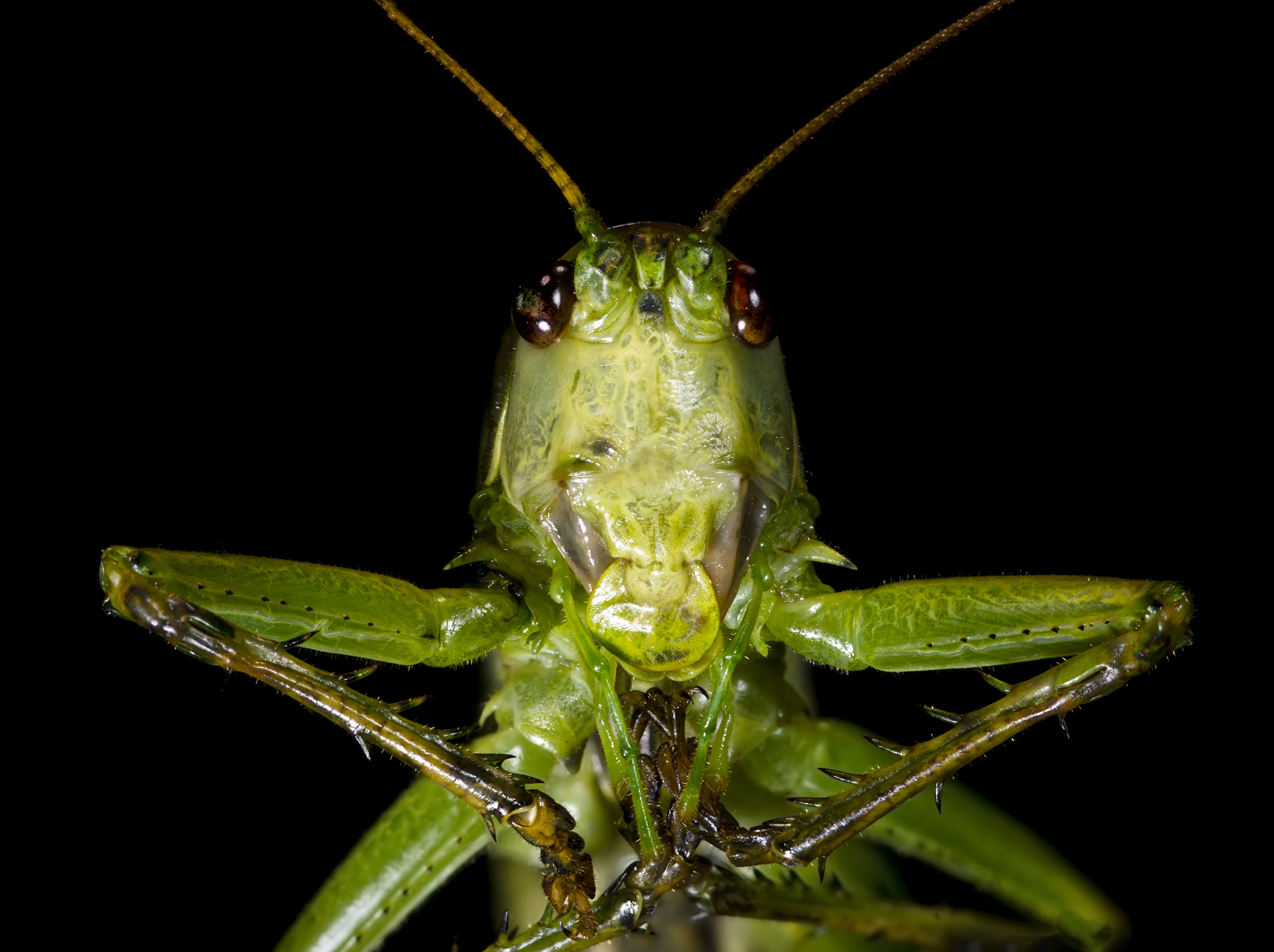|
Orchelimum Vulgare
''Orchelimum vulgare'', otherwise known as the common meadow katydid, is a species of Orthoptera found in the central and eastern regions of North America. They are active from midsummer to fall. Distribution and habitat ''Orchelimum vulgare'' is distributed across much of North America. They prefer fields and low meadows, where they perch on clumps of grass. They adapt best in moderate temperature climates, and cannot handle extreme heat or humidity. Identification ''Orchelimum vulgare'' can be characterized by their red eyes, green faces, and a distinctly curved ovipositor The ovipositor is a tube-like organ used by some animals, especially insects, for the laying of eggs. In insects, an ovipositor consists of a maximum of three pairs of appendages. The details and morphology of the ovipositor vary, but typica .... They have green bodies and brown legs that allow for them to camouflage themselves with their environment. Two black lines can be found on their dorsal ... [...More Info...] [...Related Items...] OR: [Wikipedia] [Google] [Baidu] |
Tettigoniidae
Insects in the family Tettigoniidae are commonly called katydids (especially in North America), or bush crickets. They have previously been known as "long-horned grasshoppers". More than 8,000 species are known. Part of the suborder Ensifera, the Tettigoniidae are the only extant (living) family in the superfamily Tettigonioidea. They are primarily nocturnal in habit with strident mating calls. Many species exhibit mimicry and camouflage, commonly with shapes and colors similar to leaves. Etymology The family name Tettigoniidae is derived from the genus '' Tettigonia'', first described by Carl Linnaeus in 1758. In Latin ''tettigonia'' means a kind of small cicada, leafhopper; it is from the Greek τεττιγόνιον ''tettigonion'', the diminutive of the imitative ( onomatopoeic) τέττιξ, ''tettix'', cicada. All of these names such as ''tettix'' with repeated sounds are onomatopoeic, imitating the stridulation of these insects. The common name ''katydid'' is also on ... [...More Info...] [...Related Items...] OR: [Wikipedia] [Google] [Baidu] |
Orthoptera
Orthoptera () is an order of insects that comprises the grasshoppers, locusts, and crickets, including closely related insects, such as the bush crickets or katydids and wētā. The order is subdivided into two suborders: Caelifera – grasshoppers, locusts, and close relatives; and Ensifera – crickets and close relatives. More than 20,000 species are distributed worldwide. The insects in the order have incomplete metamorphosis, and produce sound (known as a " stridulation") by rubbing their wings against each other or their legs, the wings or legs containing rows of corrugated bumps. The tympanum, or ear, is located in the front tibia in crickets, mole crickets, and bush crickets or katydids, and on the first abdominal segment in the grasshoppers and locusts. These organisms use vibrations to locate other individuals. Grasshoppers and other orthopterans are able to fold their wings (i.e. they are members of Neoptera). Etymology The name is derived from the Greek � ... [...More Info...] [...Related Items...] OR: [Wikipedia] [Google] [Baidu] |
Ovipositor
The ovipositor is a tube-like organ used by some animals, especially insects, for the laying of eggs. In insects, an ovipositor consists of a maximum of three pairs of appendages. The details and morphology of the ovipositor vary, but typically its form is adapted to functions such as preparing a place for the egg, transmitting the egg, and then placing it properly. For most insects, the organ is used merely to attach the egg to some surface, but for many parasitic species (primarily in wasps and other Hymenoptera), it is a piercing organ as well. Some ovipositors only retract partly when not in use, and the basal part that sticks out is known as the scape, or more specifically oviscape, the word ''scape'' deriving from the Latin word '' scāpus'', meaning "stalk" or "shaft". In insects Grasshoppers use their ovipositors to force a burrow into the earth to receive the eggs. Cicadas pierce the wood of twigs with their ovipositors to insert the eggs. Sawflies slit t ... [...More Info...] [...Related Items...] OR: [Wikipedia] [Google] [Baidu] |
Orchelimum
''Orchelimum'' is a genus of katydid with 21 known species. Species The following species are recognised in the genus ''Orchelimum'': * Subgenus ''Metarhoptrum'' Rehn & Hebard, 1915 ** '' Orchelimum fraternum'' Rehn & Hebard, 1915 ** '' Orchelimum superbum'' Rehn & Hebard, 1915 ** '' Orchelimum unispina'' (Saussure & Pictet, 1898) * Subgenus ''Orchelimum'' Serville, 1838 ** '' Orchelimum agile'' (De Geer, 1773) ** ''Orchelimum bullatum'' Rehn & Hebard, 1915 ** '' Orchelimum campestre'' Blatchley, 1893 ** ''Orchelimum carinatum'' Walker, 1971 ** '' Orchelimum concinnum'' Scudder, 1862 ** '' Orchelimum delicatum'' Bruner, 1892 ** ''Orchelimum erythrocephalum'' Davis, 1905 ** '' Orchelimum fidicinium'' Rehn & Hebard, 1907 ** '' Orchelimum gladiator'' Bruner, 1891 ** '' Orchelimum laticauda'' (Redtenbacher, 1891) ** '' Orchelimum militare'' Rehn & Hebard, 1907 ** '' Orchelimum minor'' Bruner, 1891 ** ''Orchelimum nigripes'' Scudder, 1875 ** ''Orchelimum pulchellum ''Orchelimum pul ... [...More Info...] [...Related Items...] OR: [Wikipedia] [Google] [Baidu] |


